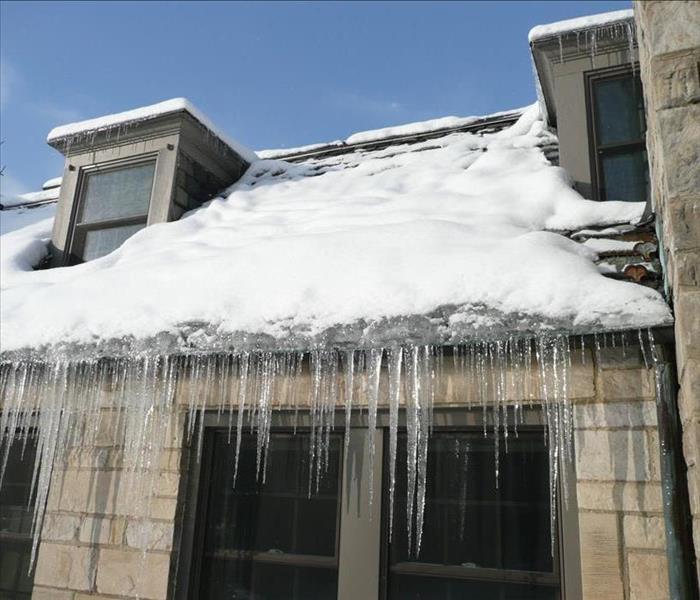Ice Dams Prevention
9/9/2022 (Permalink)
Ice dams occur when heavy snow buildup melts during the day, and then refreezes at night when temperatures drop.
After several days of melting-freezing cycles, the melted water and ice will work up under the shingles. The water will enter the attic and eventually cause damage to the ceilings, wall and contents. In some cases the ice dam could go unnoticed for an extended period of time, and it could cause significant damage to the building and its contents.
You can take steps to reduce the chance of an ice dam forming on your property:
- Thoroughly clean all leaves, sticks and other debris from your home's gutters and down spouts. By doing this it allows melting snow to flow through the gutters and down the spouts.
- If possible, and if it is safe to do so, try to keep the snow on your roof to a minimum. Try using long-handled devices on the market, often called "roof rakes". This will let you pull the snow off the roof from the ground. Keeping the heavy snow off your roof will help reduce the chance for both an ice dam formation and roof failure.
- All winter long, try keeping gutters and down spouts clear of snow and icicles.
- Evaluate the insulation and ventilation in your attic. Good airflow from under the eaves or soffit, along the underside of the roof and out through the roof vents are critical. The insulation is important, as it helps prevents heat loss from the interior of the home. The venting allows the attic air to stay cold enough to prevent or minimize the freeze/thaw. Consult a reputable roofing and/or insulation contractor about these improvements.




 24/7 Emergency Service
24/7 Emergency Service
